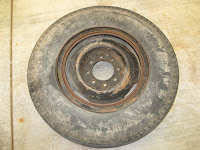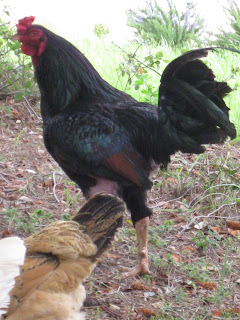Tuesday, March 16, 2010
For the Cornichon team sound track
Just about perfect for grinding up a long hill
Scroll down to find it on the list of this live session, click to listen
I recommend the audio only version, as the band is more talent than looks.
Monday, March 15, 2010
The Vang
David and I both finished the Solvang Century last weekend! Now we know why there are windmills in a mock-Danish town. It's windy! I just hope Denmark isn't as crowded as this ride.
There were hoards of riders, an endless stream ahead and behind all day. To give you an idea of the mass of humanity taking part at this event, check out the scene at the first rest stop.The ride heads west from Solvang past the huge Ostrich farm towards Lompoc. The ride didn't pass the place to eat Ostrich, which is east of Mission Santa Iñes at the intersection of 246 and the San Marcos Pass road, so we missed out on that snack. "Tastes like chicken".
The closer to Lompoc, the more the wind started to be a big factor. When the ride turned north, the wind kicked up. Found myself on a flat to downhill section going 12 mph. There was one section heading out to Lompoc where the cross wind was more behind us and that section was 22 mph. Except for when we did the longest hill climb of the ride, it seemed like we were never out of the wind.
The ride out to Lompoc took a nice country rode bypassing the direct route along 246. The 246 route is known for its flower farms, rectangles of vibrant reds, yellows, whites and blues at certain times of the year that's worth the drive sometime if you haven't seen it.
From Lompoc, the ride passes Vandenburg AFB, home to ICBM tests that target various atolls in the south Pacific, and also home to the launches of satellites worked on by our friends here at Lockheed and NASA/Ames, including Gravity Probe B (my friend Jeff worked on this).
Next it was past Casmalia, a 252 acre superfund site where 5.6 billion pounds of toxic waste were dumped. I didn't get off my bike anywhere near there.
The hoards never let up. At the 56 mile rest stop, David's comment was something like, "Holy cow, look at the food line". It must have been 50 people long. It was necessary to wait in line to use the Andy Gump. This is already 3+ hours into the ride and it really hadn't thinned out much.
Here we are at mile 70. Admittedly, there are a few less people but there's still big groups of cyclists around us.
The finish included two smaller but noticeable hills past the wineries back into Solvang. I kept my speed low on the downhills because the road was very rough.
We passed the Fess Parker winery above. Fess Parker played in the Davy Crockett, "king of the wild frontier" TV show I watched as a kid. The hotel and spa is 4-star but given who Davy Crockett was, I've got to wonder what they serve to eat. Ostrich!
Ride (CPU) time was 6hr15 minutes and I was pretty happy with it. Wall clock time was closer to 7:40.
While we were riding, our families checked out our favorite Solvang stop to sample the aebleskiver. I've been stopping in Solvang for aebleskiver for 20 years or more. Courtesy of my Mom, we actually own one of these pans. If they sold the ovens...
Dinner at Jocko's Steak House hit the spot.
The end looked like this.
 |
| Dog dreams |
Sunday, March 7, 2010
How To Change A Tire
How To Change A Tire
A certain amount of care is required to change a tire. One must be prepared to handle the tube and flap without damaging them, and use the proper tools at all times.
Step 1: Place the Wheel on the Ground

Generally replacing a tire while the wheel is attached is more difficult and dangerous. Remove the wheel, and set it on the ground in an area with sufficient workspace.
Step 2: Deflate the Tire
 Allow all air to escape from the tire. The best way to do this is to remove the valve cartridge. This only works for Presta valves, though. It is very difficult to remove a tire while it is pressurized.
Allow all air to escape from the tire. The best way to do this is to remove the valve cartridge. This only works for Presta valves, though. It is very difficult to remove a tire while it is pressurized.Step 3: Remove the Lock Ring
Not all tube-type wheels have a lock ring, but in this case, there is one. Here, I used a screwdriver and a small sledge hammer to delicately remove the lock ring from the w
 heel.
heel.Step 4: Remove the Rim Ring


The pictured wheel has a multi-part structure. Rather than flipping the tire over the rim, the rim disassembles to remove the rubber parts. In the case of this wheel, 30+ years of inactivity led to the rubber being welded to the metal. The solution was to hammer in a prybar all the way around the wheel to loosen the connection. This, and a judicious application of furniture clamps, made the ring removal quite smooth.
Step 5: Remove the Tire, Tube, and Flap from the Wheel
The tire will need to be loosened from the back half of the wheel. The air filler pipe must be guided carefully through the hole in the wheel. Try not to damage the flap, as it can be re-used.
Step 6: Clean, Inspect and Paint the Wheel
Look for cracks, and bends that can be repaired with a sledgehammer.

Step 7: Reassemble Wheel

Use a new tube and tire. Don't bother with balancing weights, as the vehicle is not likely to exceed 30MPH anyhow.
Back in Black (Tires)
I've been running white Continental 4000s this past year. The color isn't common in stores, and as previously noted, they seem to figure prominently in major accidents. It also turns out to be a fairly slow color. At any rate, I switched to Continental 4000S.
These tires rock. Black is a way faster color than white (blue is probably still the fastest color). These tires also have the chili compound, which gives better grip, durability and reduced road resistance -- all in one tire!!! Can you believe it?!!!
Anyhow, today was the big day. Steve, his friend John and I rode the West Alpine loop. It was on this ride a year ago, just after putting new _white_ tires on, that I had a blowout and broke my clavicle. I was very paranoid, especially when going by _the_spot_ on Page Mill. It all worked out well though. Plus I think I'm getting in shape. Solvang is next week!

This is a picture of us on Alpine road, at the turn off for Portola state park. That's me in the middle with my new black chili tires. The next step is to get matching bar tape.
My Big Black Rooster

I had a different title for this post, but I decided to use the word "rooster."
A couple of weeks ago, we added a rooster to our flock. He is very protective of his hens, and you have to whack him with a stick to keep him from attacking. So far, he's drawn blood from both Julia and Leonardo.
The hens (five of them) seem to like having a husband around. Egg-wise, it seems to have made them more productive, though that might just be co-incidence. The last two hens started laying after his arrival.

This posting has nothing to do with cycling.




